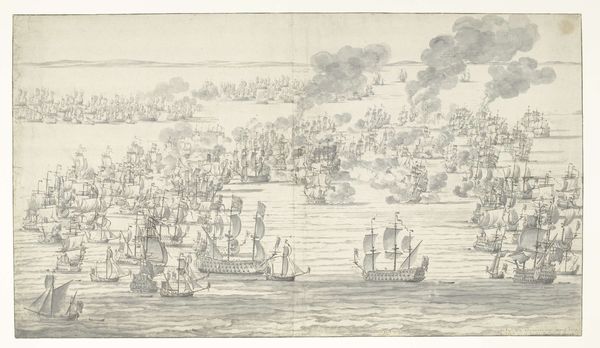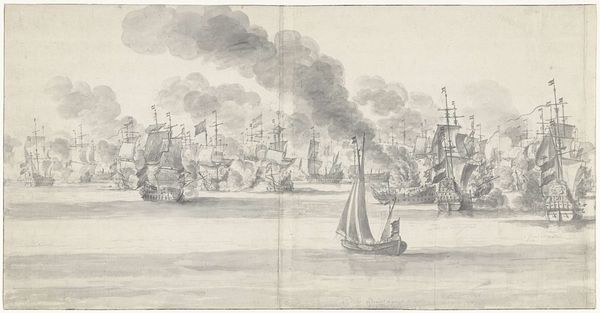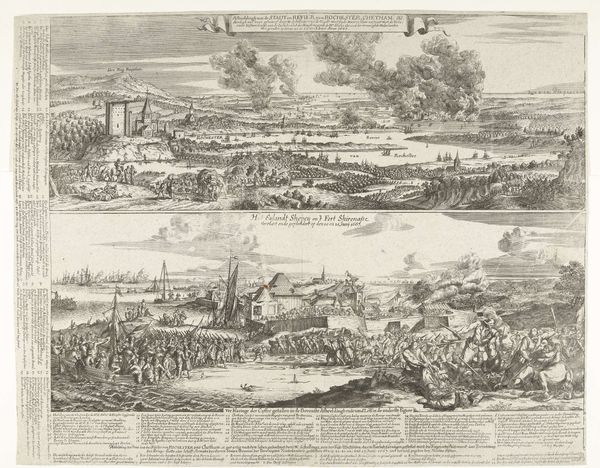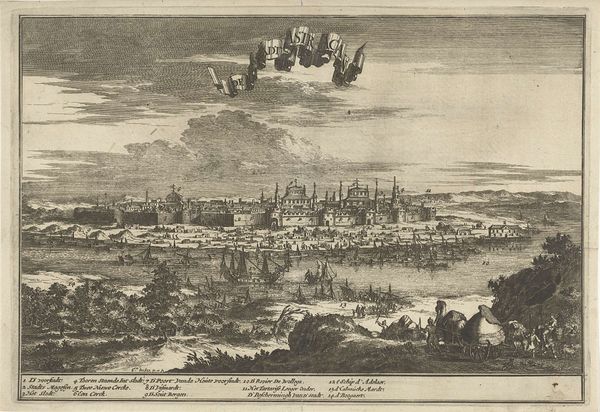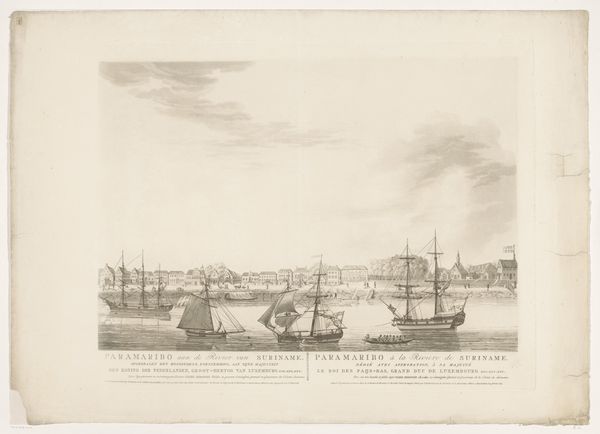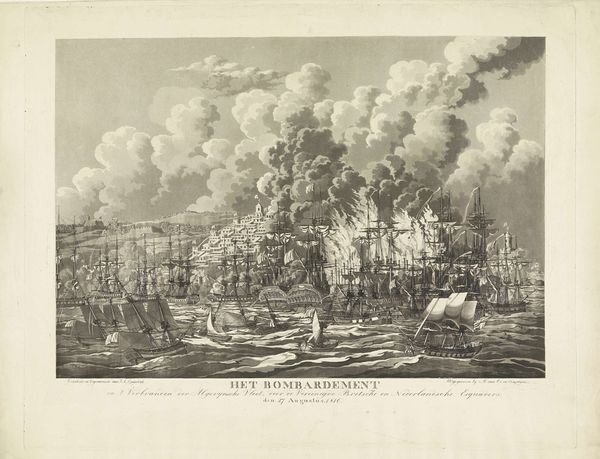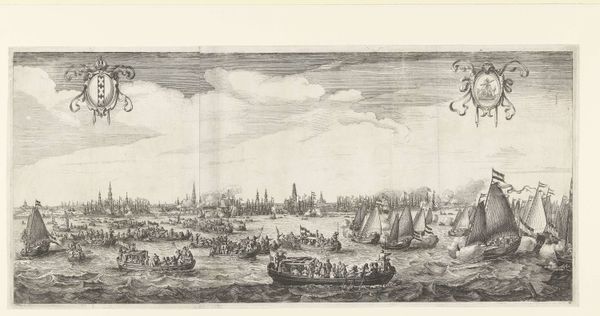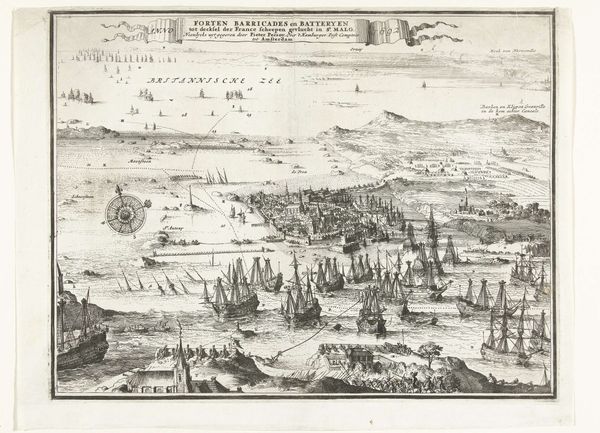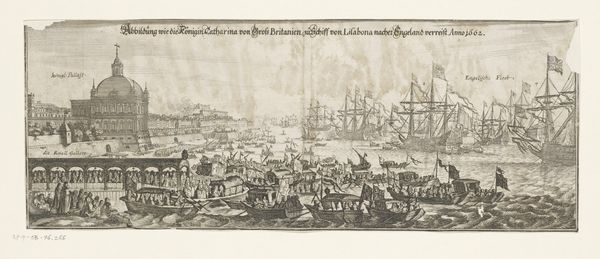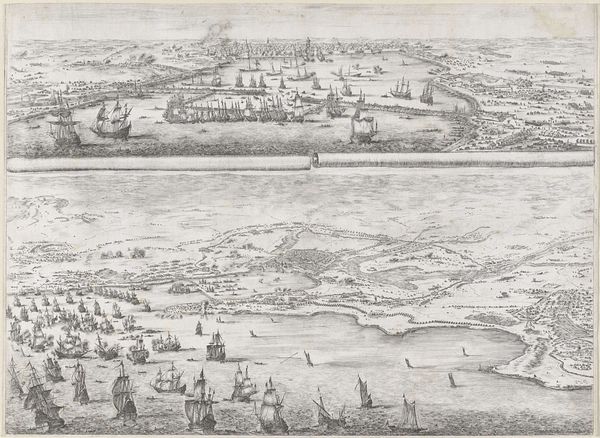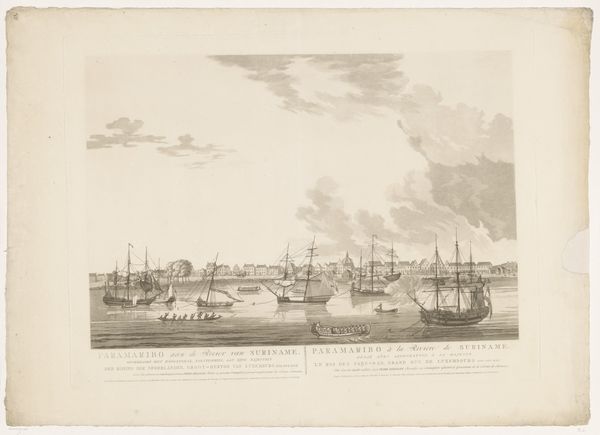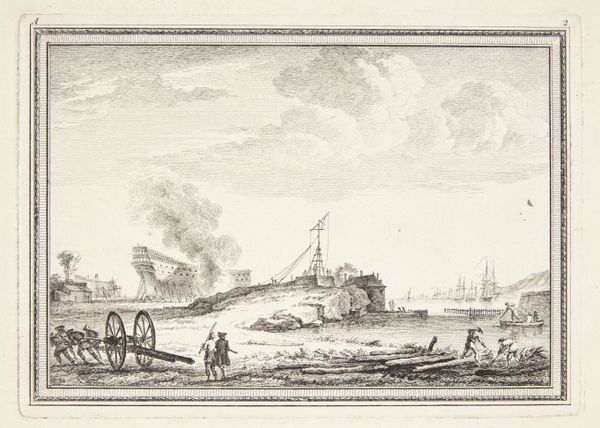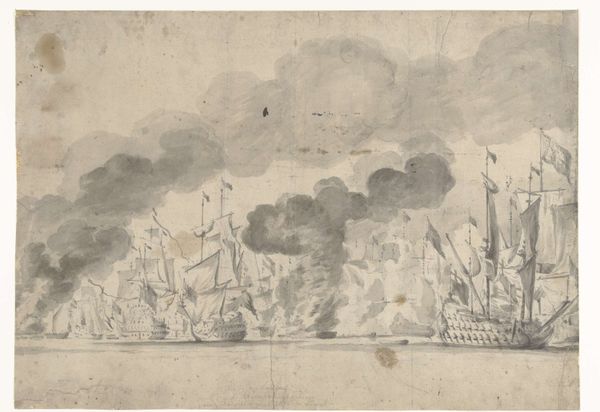
Robert Holmes Setting the Dutch Fleet on Fire at Terschelling 1666
0:00
0:00
drawing, etching, ink
#
drawing
#
baroque
#
dutch-golden-age
#
pen sketch
#
etching
#
landscape
#
etching
#
ink
#
line
#
cityscape
#
history-painting
#
realism
Dimensions: height 447 mm, width 760 mm
Copyright: Rijks Museum: Open Domain
Willem van de Velde the Elder created this pen drawing, "Robert Holmes Setting the Dutch Fleet on Fire at Terschelling," in the 17th Century. Van de Velde, a Dutch maritime artist, lived in a time of intense naval conflict between the Dutch and English. This drawing freezes a moment of war, a visceral depiction of the Second Anglo-Dutch War. Observe how the smoke fills the sky, obscuring and overwhelming our field of vision. War at sea was not only about military strategy, it was also about national identity and economic power. The ships themselves were floating extensions of state power. Van de Velde’s detailed rendering of the chaos perhaps speaks to his own position as both an observer and a participant in these historical events. Although he eventually moved to England and served the English crown, his earlier work provides insight into the shifting allegiances and complex identities forged in the crucible of maritime conflict. This drawing invites us to reflect on the human costs of war, the fragility of peace, and the enduring power of art to capture moments of profound historical significance.
Comments
rijksmuseum about 2 years ago
⋮
During the Second Anglo-Dutch War, the English Rear Admiral Robert Holmes raided the Vlie estuary in August 1666, setting fire to a large Dutch merchant fleet of 150 ships moored between the islands of Vlieland and Terschelling. As part of the same attack – which came to be known as Holmes’ Bonfire – he sacked and burnt down the village of West-Terschelling, killing mostly women and children.
Join the conversation
Join millions of artists and users on Artera today and experience the ultimate creative platform.
